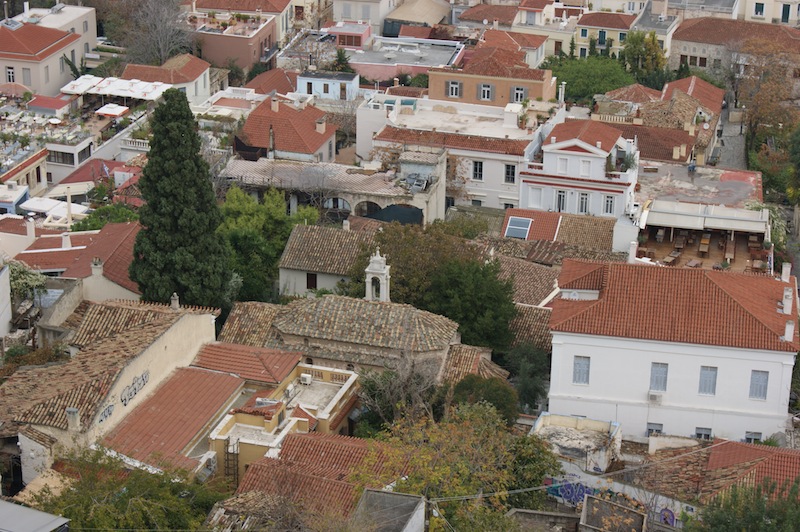I’m not the type who returns time and again to the same holiday destination. But I have been back to Athens.
Admittedly, my last visit was 34 years ago and was nothing more than a hurried day trip during a week spent by the sea on the Greek mainland with my best friend Chris.
My companion this time was the other half, and we had the luxury of a couple of days to explore after arriving in the dark, deep in November, as fresh as any men could be after a BA Club flight on an aged Boeing 767. We dragged our bags on to the metro for the 45-minute trip into the city centre – our destination, the stop at Akropoli.
We’d booked ourselves into the Herodion Hotel just around the corner from the station and the overwhelmingly huge, modernist Acropolis Museum. We eventually found the hotel after a frustrating diversion around busy streets full of noise, traffic jams and exhaust fumes. A couple of taxi drivers rowed threateningly.
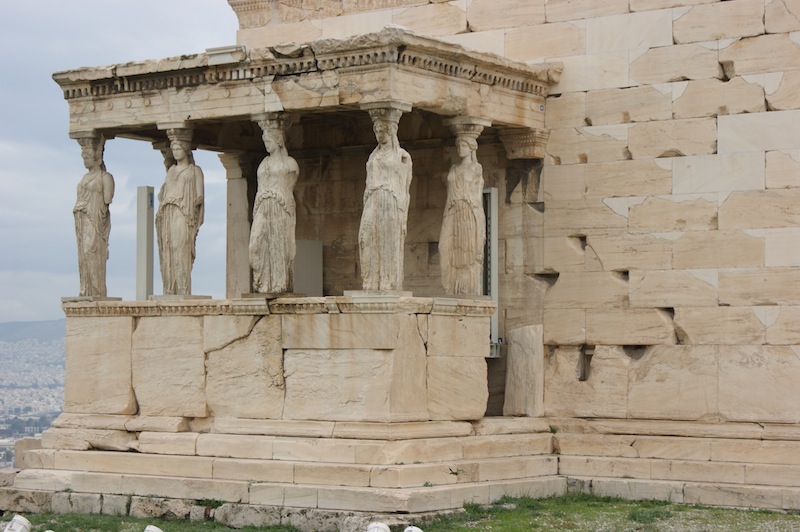
Above us the flood-lit Acropolis loomed large amid an orange glow but I could see much of it was swathed in scaffolding, a sign that restoration work was still in full flow. The hotel was a sleek affair, efficient and stylish but our room proved to be basic, a bit tatty and worn, more disappointing budget than 4-star.
Still, we perked up with a beer in the hotel bar before strolling out to eat, stopping just up the road at a delightful restaurant called Strofi. With its main dining room on the top floor, it had great views of the Acropolis. I stuffed my face with stuffed vine leaves and lamb with potatoes roasted in rosemary. Graham had gyros, and enough to keep an army on its feet for a week. It was truly delicious.
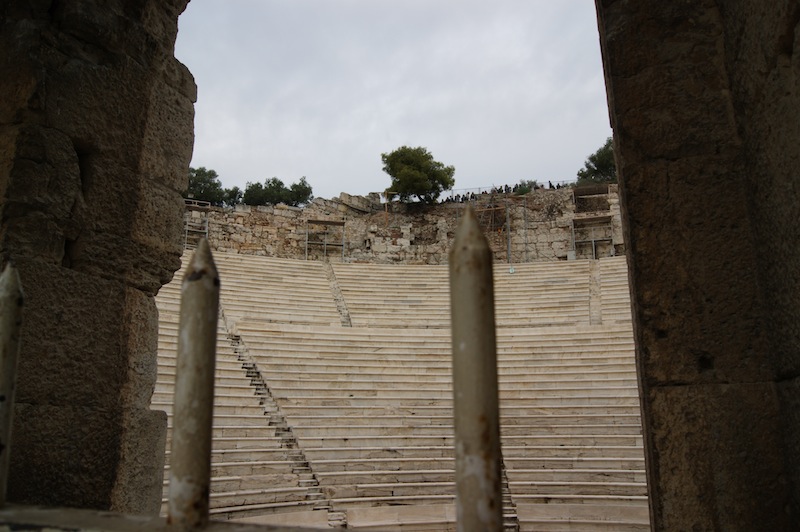
We finished that first evening at the Yard Cafe just around the corner on Makrigianni, a pedestrianised and touristy street by the museum. We watched the world go by in shirtsleeves, the mild air a pleasant surprise so deep into autumn.
During the night I was woken by thunder and the effects of drinking too many beers but in the morning we were keen to rise early and get out and about, stocking up on a fairly average breakfast in the hotel on the way.
The roads were wet and trees dropped their autumn leaves into the puddles. Clouds hovered over the city’s hills as we walked to the Acropolis – a UNESCO World Heritage Site – to visit the collection of historic temples and theatres on the rocky hill that dominates the city.
Athens has at least tried to keep the worst of the traffic away from the monument by turning some adjacent roads into pedestrian-only streets. Lined with olive trees that were bursting with green and black fruits, they weren’t that busy with tourists either. A group of Indian tourists were more interested in being photographed with a big Merc than the Acropolis itself.

The Odeon of Herodes Atticus was our first taste of the historic sites, a nerve-tinglingly steep theatre with slick marble seating. We wound our way up the hill beside it, one that I recall climbing way back in 1980 when it was a lot hotter and dustier. This time the city and its many hills were lush with growth thanks to the autumn rains.
We fought our way through a few groups of Japanese and Greek tourists, as well as some obnoxiously noisy school kids, risking life and limb on the slippery marble pathways that took us into the mini-city of ruins. As I feared, scaffolding draped the Parthenon and several other temples. Ugly cranes and cabins, rusty pipes and all the other detritus of restoration and conservation littered the site, detracting from the dramatic effect.
How could I put myself in the Athens of 2,000 years ago when the Parthenon itself was propped up with scaffolding and its interior filled with modern industrial clobber? Still, it’s a big bugger of a temple and a remarkable survivor despite the chunks blasted out of it over the centuries.
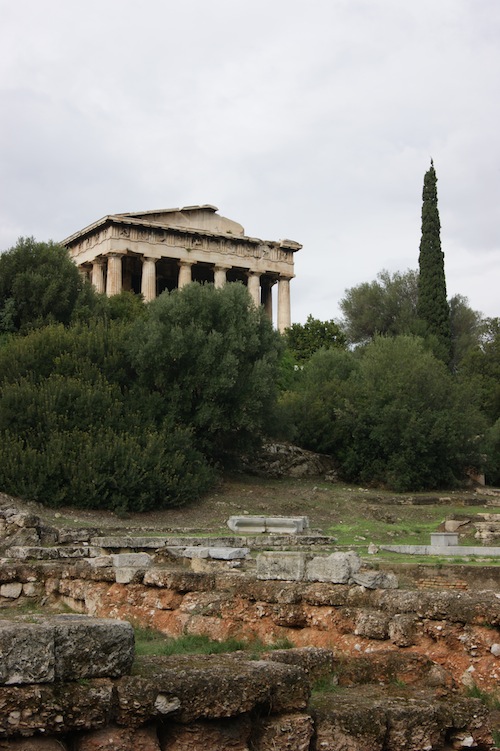
It was the city beyond that captured my imagination. The views from the rock were majestic despite the threatening weather. Down below, I could see the monstrous Acropolis Museum and our hotel. Nearby lay the historic Agora, some charming old churches and the modern city. And further on still were the green hills of Athens and the port of Piraeus.
Dodging the tour groups, we walked down the hill to the Agora. The heart of old civic Athens, it’s one of those sites that’s almost impossible to picture without the help of models. That’s because it’s largely a pile of rubble scattered amid the olive trees, carved on its northern edge by a noisy railway line.
Some statues offered a sense of the scale of the place and we ventured into a pretty Byzantine church with impressive frescoes, but the crowning glory was undoubtedly the Temple of Hephaestus, perched high above the Agora amid autumnal woodland. It’s much more complete than the Parthenon, but a lot smaller.
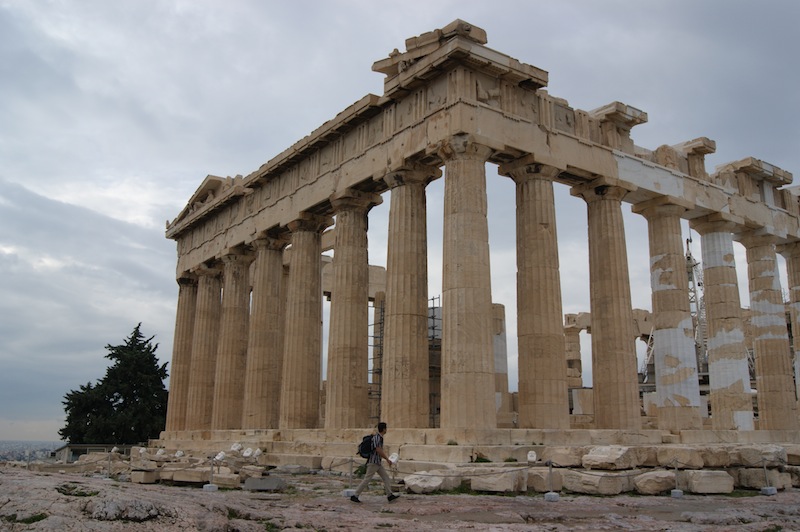
The Stoa of Attalos stood opposite, a recreation of a long market building that once stood on the site. Its endless columns made for great photo opportunities and its upper floors offered good views of the neighbourhood but the museum display, featuring numerous bits of pottery and statues, just didn’t rock my boat.
We walked on to Hadrian’s Library, or rather what remains of it. Again, it wasn’t easy to picture this once elaborate public building.
What was it that was stopping me warming to the city? Was it the surliness of the locals or the drab weather? The never-ending graffiti or the run-down buildings and largely uninspired architecture of the modern city?
Certainly, Athens was showing the scars of the economic turmoil that’s hit Greece in recent years. In parts, especially as we wandered around Monastiraki and Psirri, I was reminded of Naples, another Mediterranean city that struggles with poverty and pollution, and that threatens at times to tip over into third world status.
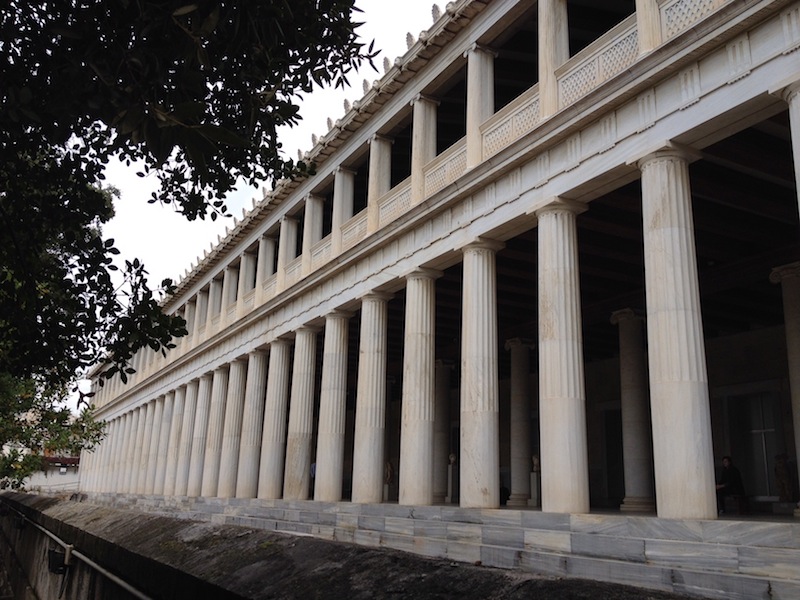
We stopped for coffee in the ugly square beside Monastiraki station and endured being dive-bombed by pigeons, then walked into the neighbouring flea market. Largely an excuse for tacky souvenir shops and cheap clothing stores, we eventually found some stalls selling antiques, from vintage radios, to dining chairs, old prints and endless bric-a-brac. They were all crammed full of dusty stuff but doing very little business.
We walked on, touring the Psirri district, discovering narrow but tatty streets. Many were given over to very specific groups of shops, ones where you could buy an endless array of door handles, locks, cloth or bathroom fittings. But there were also little squares dominated by twee Byzantine churches and trendy cafes and bars. I felt myself warming to the district, helped by lunch at the funky Mama Roux‘s, a place with great beer, fat burgers and pleasant staff.
The rain was falling lightly as we left, the temperature falling, so I popped into H&M to buy a cheap hoodie before we walked the main shopping street, Ermou, towards the Parliament building at Syntagma. It was a steet like any other city shopping street, full of international chains – M&S, Mango and the like. We could’ve been anywhere in the world and it was all rather depressing after the individuality of the streets we’d wandered before.
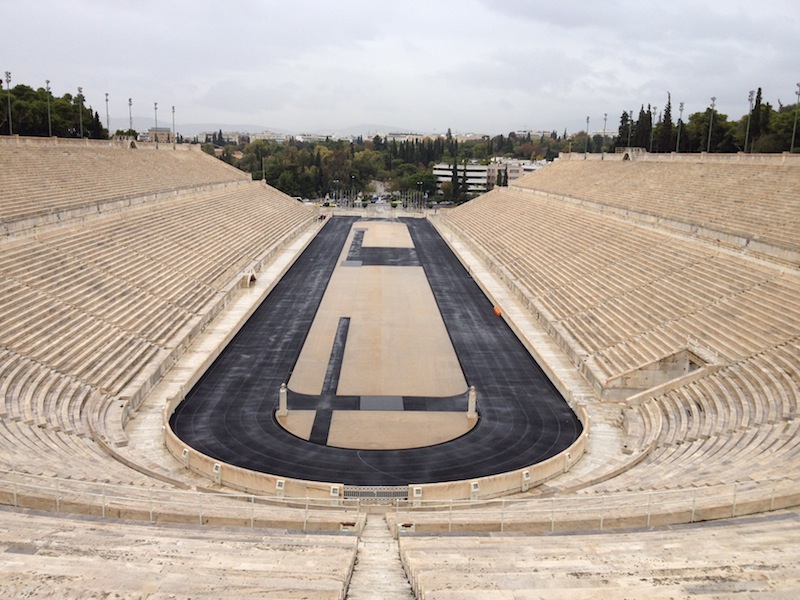
Syntagma looked drab in the drizzle but as we made our way through it we could hear the growing chants of a protest. The police were obviously expecting it, having closed some nearby streets to traffic. Perhaps it was another of the regular anti-austerity marches that we used to see on BBC News, back when the Greek economic crisis was a big issue.
We didn’t hang around. Instead we walked into the National Gardens beside Parliament, trying to shelter from the showers. It was melancholy in there, as most gardens are in the grey of autumn.
Navigating our way around the ghastly traffic-choked streets, we ended up at the Panathenaic Stadium – and one of the highlights of the day. Beautifully symmetrical in its architectural glory, a stately recreation of an ancient sports stadium and steeped in Olympic lore, its rain-soaked marble terraces proved a punishing climb but looked amazing. Thank goodness we were visiting on a gloomy November day, when you could count the number of visitors on the fingers of one hand.
Deep in its guts was a simple yet oddly compelling exhibition of Olympic torches and posters.
A short while later, we were back on the local bar street, consuming lagers at Yard Cafe and wondering why so many Greek men felt the need to wear such unattractive trackie bottoms.
Evening saw us walking through the incredibly atmospheric Plaka district. With its narrow streets, alleys climbing the hill towards the Acropolis, steps cluttered with restaurant tables and chairs, it was a charming part of the city – at least at night.
We ended up in Psirri, drinking lager, eating fastish food at Rock & Balls – a giant industrial-style bar/restaurant with pumping music. I stuffed myself with a giant burrito before we moved on to Magaze, popular with the gays and the venue for more lager. Which is just what a man needs after a long day pounding pavements.

